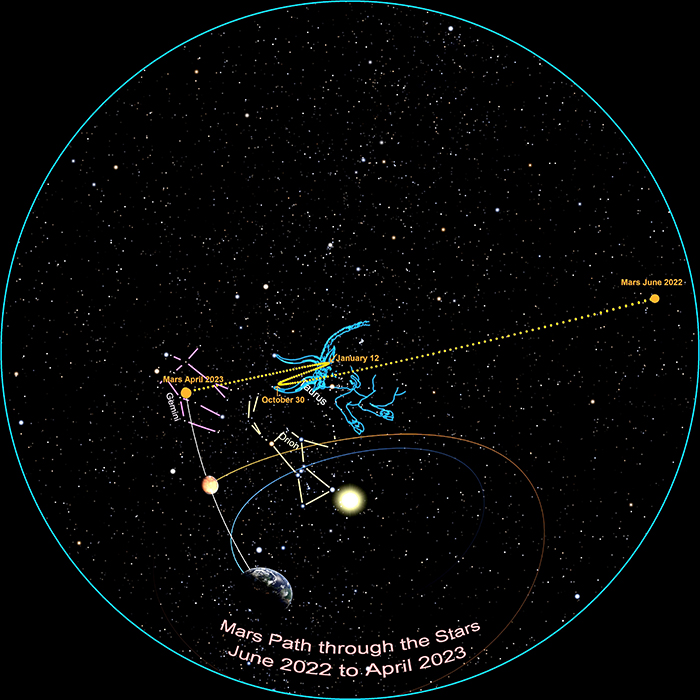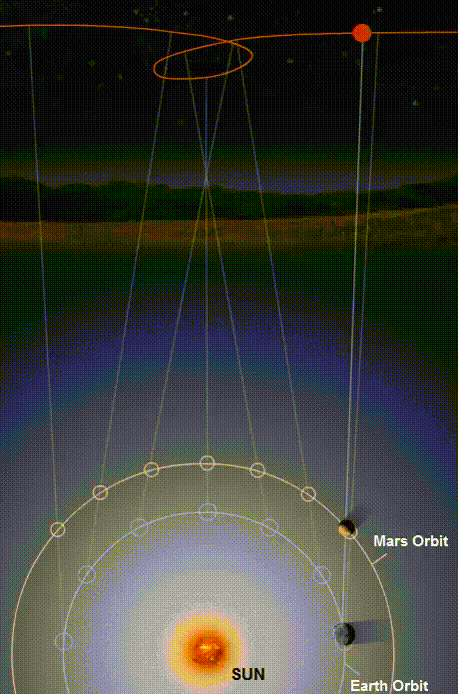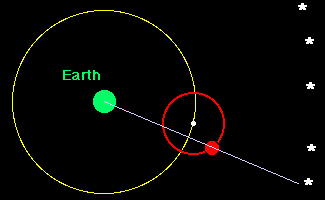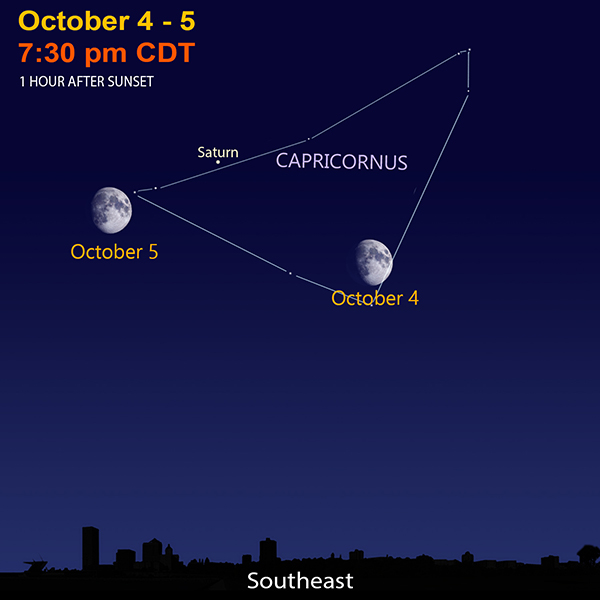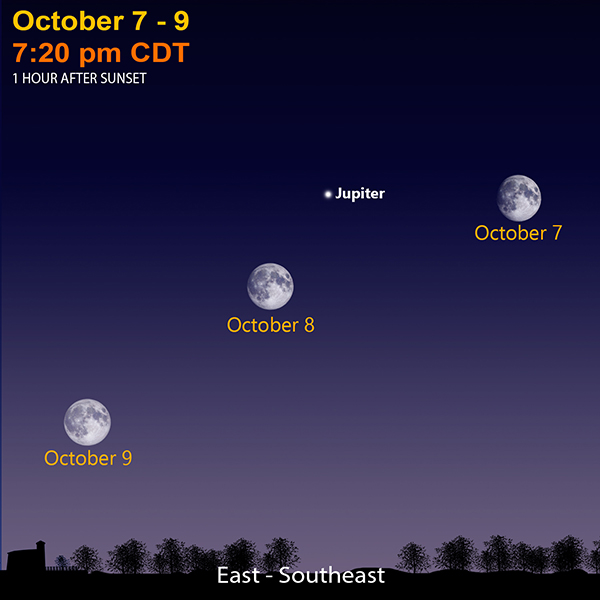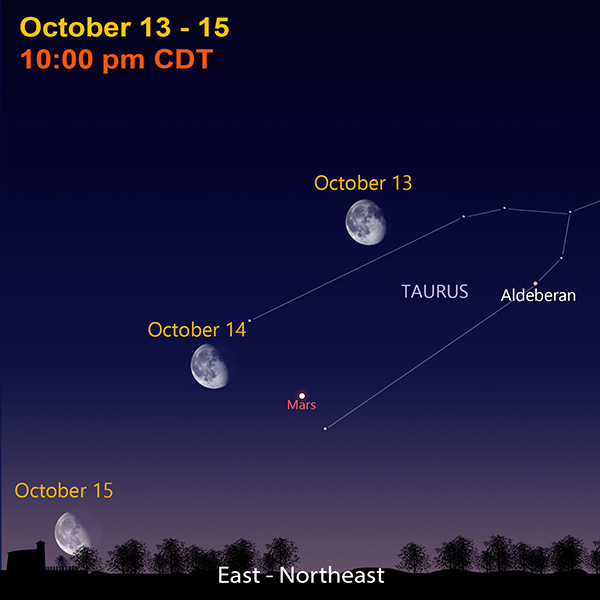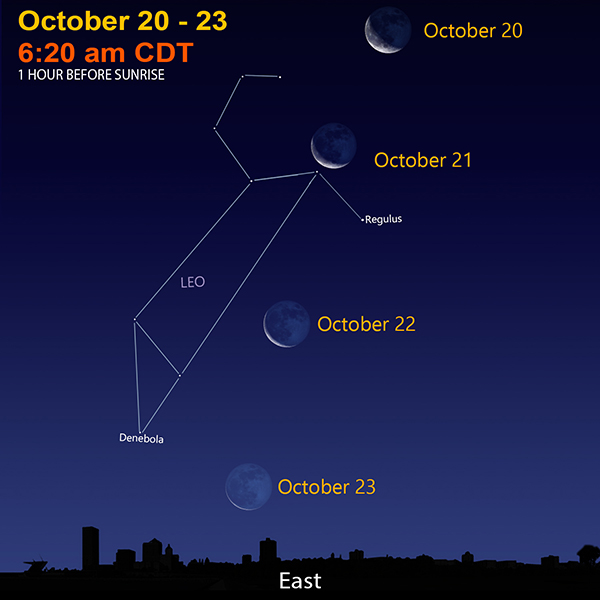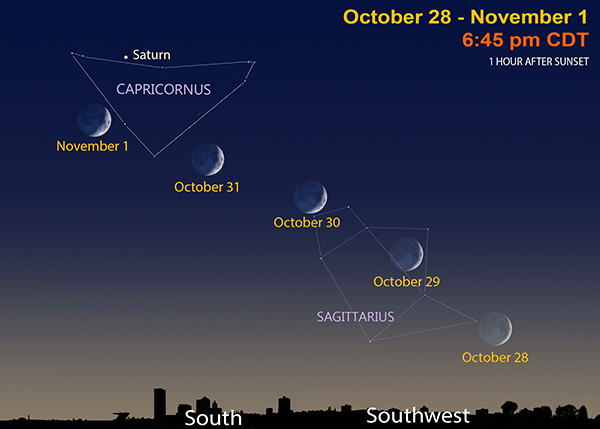Cosmic Curiosities
“Somewhere, something incredible is waiting to be known.”
- Carl Sagan, American Astronomer
Spooky, Backwards Mars
This Halloween, Mars is going to stop its motion in the sky and reverse course. It will keep going backwards against the distant stars until January 12, 2023. Then, the red planet will move forward again from the constellation Taurus the bull to Gemini the twins.
No worries, stargazers: It’s all an illusion! This change in direction is called retrograde motion. If it seems baffling, it is. It surely perplexed ancient sky watchers.
The sky illusion can be explained the next time you drive your car, or take a train or plane ride. Think about what happens when you pass someone that’s moving, too, but a little more slowly. Understanding this illusion helps if your fast ride is steady and smooth. As you near the slower object, you still see it’s going forward like you. But as you start to pass the object, it appears to move backwards for a while. As you keep going and move far ahead, the object you passed moves forward again. Of course, whatever object you passed did not stop and go backwards; it’s a simple illusion that you may have already experienced.
This retrograde motion happens all the time in the starry sky. When fast Earth passes the slower planets, we can see Mars, Jupiter or Saturn go “backwards.” We see these three planets most often because they are very visible in the night sky. But retrograde motion also happens with Uranus, Neptune, and Pluto.
Recall that, long ago, nobody thought the Earth moved. All the planets moved around us. So how did they explain a planet’s retrograde motion in the sky?
An ancient Greek astronomer and mathematician named Claudius Ptolemy, who lived around 2,000 years ago, came up with something called an epicycle. For example, as Mars orbits around the Earth, it also orbits around a moving point on its orbit known as an epicycle. This would cause it to go backwards and then eventually move forward again. The strange thing about the epicycle is this second orbit is not orbiting anything—just an empty point in space. Still, Ptolemy had an explanation for Mars’s peculiar motion while keeping the Earth still. After renaissance astronomers like Copernicus, Galileo, and Kepler put all the planets in motion around the sun, the illusionary retrograde motion made much more sense.
Demon Star
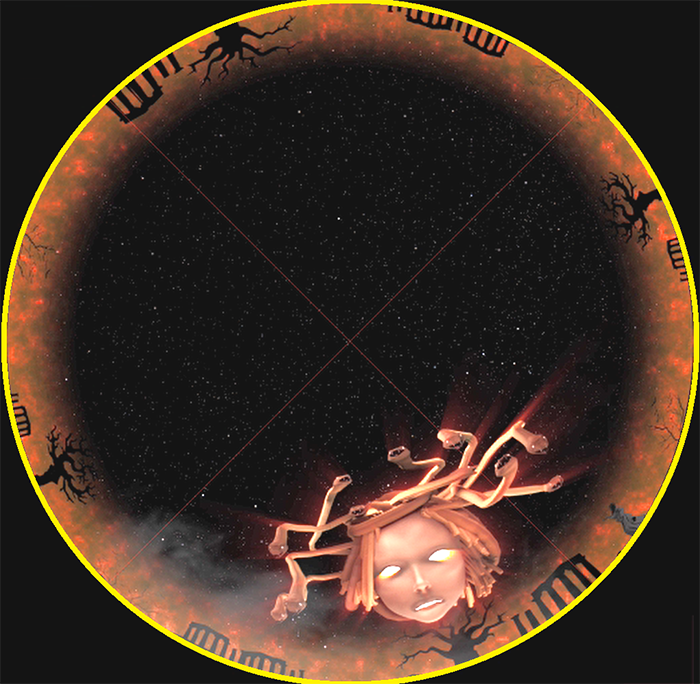
Popular lore says that, on the night of Halloween, walls between the world of the living and the world of the dead are thinned, so spirits and demons can pass through more easily.
Did one demon star make it through years ago? Maybe it’s the strange pulsing star called Algol—which, to the ancient Greeks, eerily shines as the head of Medusa in the constellation Perseus. Algol actually means “demon” or “ghoul star” in Arabic. The Islamic golden age, from about 700 to 1500 CE, was a time of scientific study. The Arabs renamed many bright stars from their knowledge of ancient Latin and Greek books and text. The original name for Algol in Greek was ton en gorgonio o lampros, translated as "the bright one of those in the Gorgon’s head."
Algol earned its name because unlike most stars, Algol’s brightness varies. Every 2.86 days, Algol’s magnitude dips for roughly 10 hours. To early stargazers, this might be a star dying but coming back to life! It wasn’t until hundreds of years later that astronomers were able to catch a glimpse of the truth.
Algol changes its brightness because it is really two stars! Together, they rotate around each other. One partially eclipses the other and their overall light dims. There is a very faint third star in the system; this fainter star orbits the inner pair every 1.86 years. This type of variable star is called an eclipsing binary system.
The stars of Algol are located 93 light years from Earth. This means if you spot spooky Algol in Perseus this October, you are seeing light from 1927!
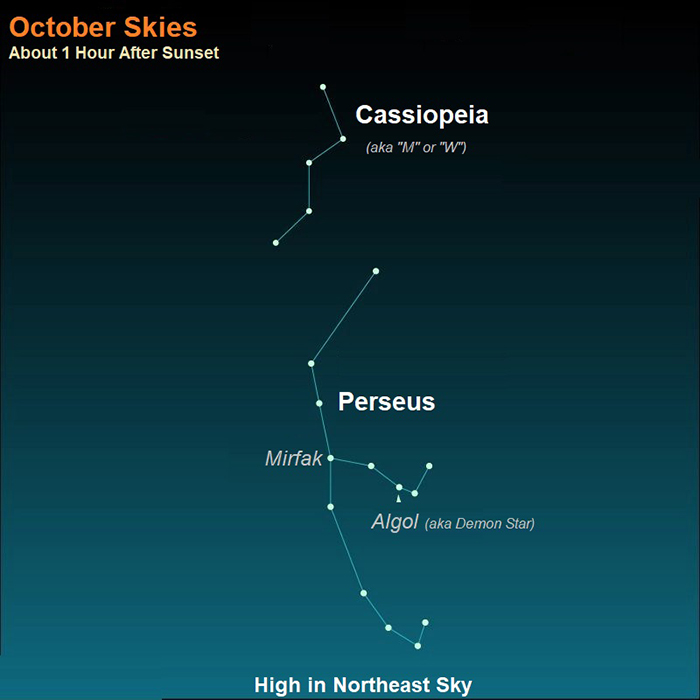
Find Perseus with the help of the constellation Cassiopeia the Queen. Cassiopeia’s distinctive “M” or “W” shape can be easily seen in the northeast on October evenings—even in most city locations. Spot Perseus below Cassiopeia.
Algol shines as bright (2.2 magnitude) as the brightest star in Cassiopeia. At its dimmest (3.4 magnitude), Algol shines like the faintest star in the “W.” The spooky, changing brightness makes Algol a perfect star for Halloween!
There are many “demon” stars in the night sky, not just Algol. Other easy-to-spot variable stars include Lambda Tauri in Taurus the bull, with an eclipse that lasts around 14 hours! There is also Beta Lyrae, in the constellation Lyra the harp—one of the constellations of the Summer Triangle. Other popular variable stars include Mira, or the head of Cetus the Sea Monster, and Betelgeuse, the bright red giant that is seen as Orion’s shoulder. However, these variable stars are not part of an eclipsing binary system.
Space in Sixty Seconds
See Mars do a retrograde loop in the constellation Taurus the bull.
Sky Sights
Saturn shines with the dim stars of Capricornus all month. Our Moon passes nearby on October 4-5.
After encountering Saturn, our Moon orbits toward brighter Jupiter from October 7-9. The king planet was just at opposition on September 26, so it shines pretty much the entire night.
Mars and the Moon shine together a little later in the evening. Look for them at about 10:00 p.m. CDT low in the eastern sky. Observe the red star Aldebaran and the Pleiades star cluster, too.
Mercury is fairly visible in the morning sky—with patience. You probably need binoculars. Look very low in the east 45 minutes before sunrise.
Venus is not visible this month but will reemerge in the evening sky this December.
The stars of Leo are known as a sign of spring—when you see them in the eastern sky after sunset. In October, Leo can be seen in the east before sunrise. Spot the waning crescent Moon from October 20-23.
A waxing crescent Moon comes back into the sky on October 28. Watch it near Saturn on Halloween night and into November.
October Star Map
Sign Up
Receive this newsletter via email!
Subscribe
See the Universe through a telescope
Join one of the Milwaukee-area astronomy clubs and spot craters on the Moon, the rings of Saturn, the moons of Jupiter, and much more.
Follow Bob on social media
Twitter: @MPMPlanetarium
Facebook: Daniel M. Soref Planetarium


